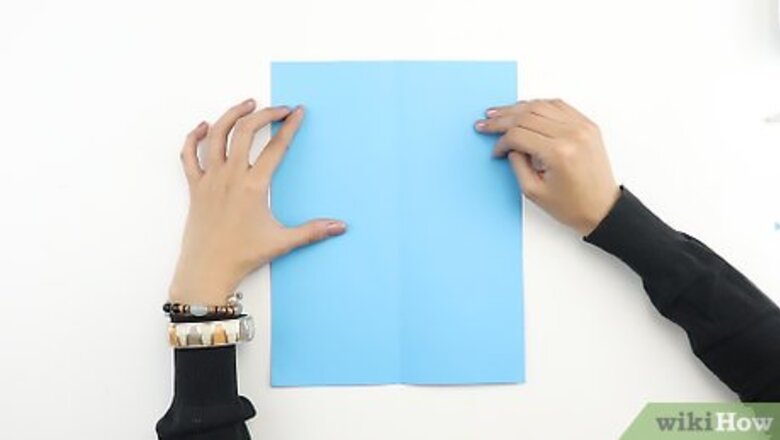
views
Folding a Pointed Nose Jet
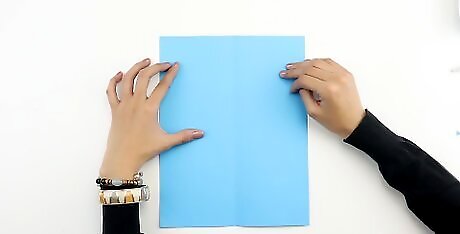
Fold a piece of paper in half lengthwise. Perform a book fold to begin. The best type of paper to use is an ordinary 7 ½ in (21.5 cm) by 11 in (28 cm) sheet of printer, or A4 paper. You can even use shipping paper. Or recycled toilet paper. Smooth out the crease after you’ve folded the paper to make it stronger, and make the folds easier to align. Unfold the paper after you crease it so the you now have a piece of paper with a vertical valley crease.
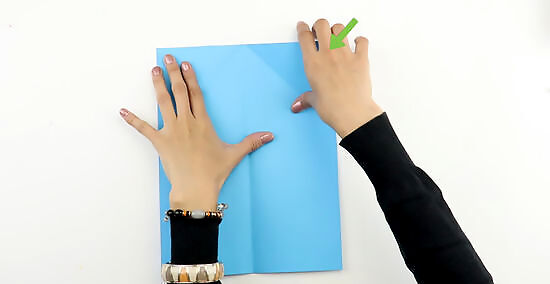
Fold the top two outer corners inwards. You want to fold you paper into the center to create triangles that meet along the middle crease. Run your fingers along the outer edges of the triangles to reinforce the folds with a crease. Make sure that your two smaller, folded triangles come to a point at the top, forming one larger triangle.
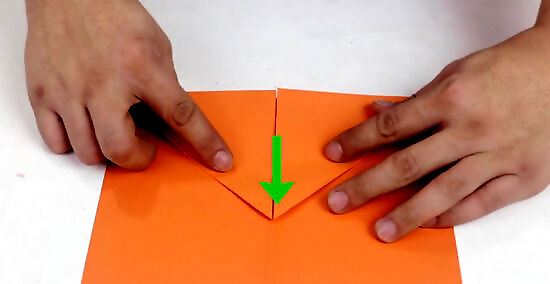
Turn the paper over. Turn the paper over so that the triangles are facing down. Then fold the triangle you have just formed back. Fold the triangle back over its flat bottom edge. The triangle should now be pointing downward. The paper will now be more in the shape of a square. Position the point to stay inline with the center crease, which is now in a mountain fold.
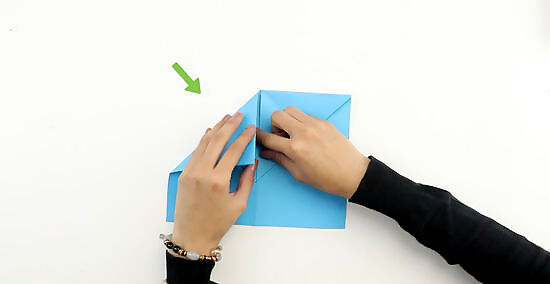
Fold the top two outer corners inwards. You will now repeat your initial corner folds on top of the two triangular folds you already have in place. This will create two thicker triangles that meet along the middle crease. Underneath you should see your original folded triangles creased to form two downward facing triangles at the edges, and two triangles facing outward (both forming a diamond) in the center.
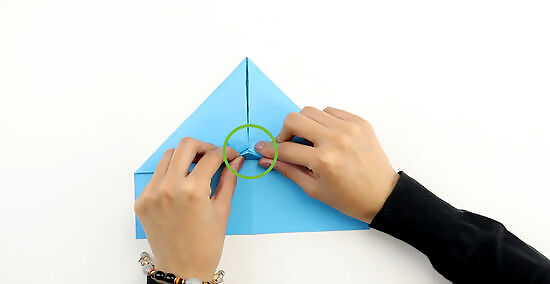
Fold three small triangles up. From the tips of the three triangles you now have folded over, comprising of the one in the center, and the two on either side, create three small triangular folds. These folds will help secure the wings of the plane. The size of the folds should be small. You want to make them equilateral triangles with sides about half an inch long.

Fold the paper in half. Fold the paper in half in a mountain fold along the original crease. The triangular folds you have just made should be on the outside. If you fold it the wrong way, the triangles will be facing each other inside the fold. You should now begin to see the base of your jet airplane forming. The triangle folds forming the bottom, and the wing tips of your paper plane.
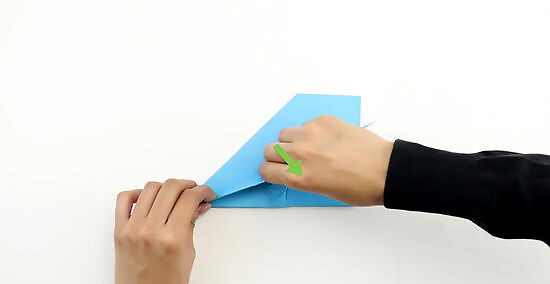
Fold one side of the paper down to make a wing. Take the diagonal part of the paper and fold it downward until it lines up straight with the bottom edge of the paper. If you hold your paper with the nose of the paper jet pointing down, the fold should resemble something of an ice cream cone.
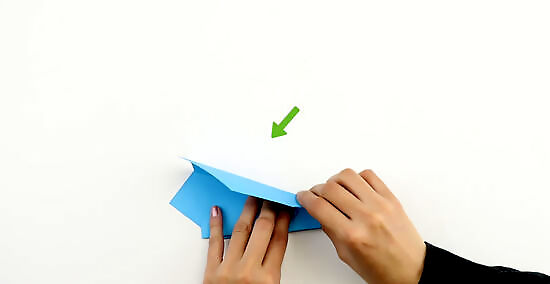
Flip your paper over. Fold an identical wing on the other side of the paper. Repeat the fold you made for the first wing, aligning the bottom of the fold to the bottom, straight edge of your paper. Before you crease your fold, make sure that it is not only aligned to the bottom edge of your plane, but that the tip in the back aligns with the one from your first wing. By making sure they are even you’ll get a consistent flight.
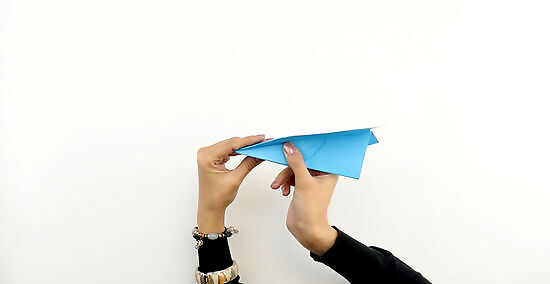
Prepare to fly your paper jet. Grip the thick part of the paper below the wings and fan out your wings. Now you can throw your plane in the air and watch it fly. Throw it parallel to the ground or in an upward arc. Don't throw it toward the ground or straight up as it won't stay in the air for very long. Pinch the paper jet towards the front, near the nose. Your plane will have three parts, the base of your jet which is formed by the initial crease, and on either side, two flaps with two triangles pointing upwards followed by wings at the top. You can choose to hold the two flaps between your fingers when you throw your jet, or fan them out. You may find one method works better than the other.
Folding a Flat Nose Jet
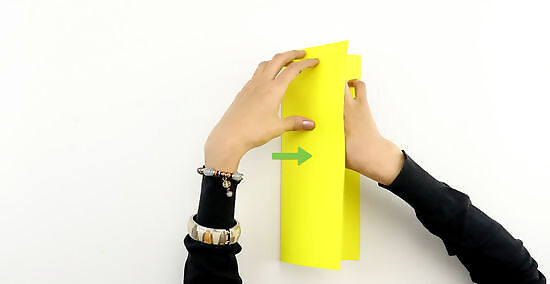
Fold a piece of paper in half. Lay your paper on a flat surface and position it so that it is in portrait with the shorter sides on the top and bottom. Perform a book fold to begin. Use an ordinary 8 ½ in (21.5 cm) by 11 in (28 cm) sheet of printer, or A4 paper. Align the edges of your paper and crease your center fold. Unfold the paper after you crease it so the you now have a piece of paper with a vertical valley crease.
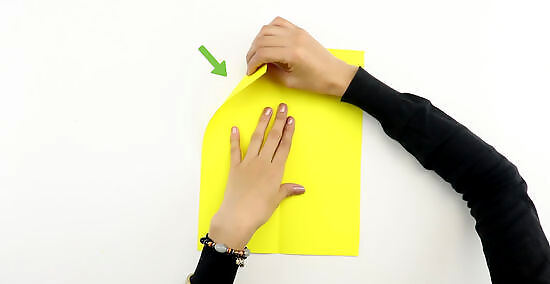
Fold the top two corners in. With your paper in portrait position, take the top two outer corners and fold each one to meet at the center crease. Your paper should now look a bit like a house. The two folded triangles should come down to about halfway on your paper.
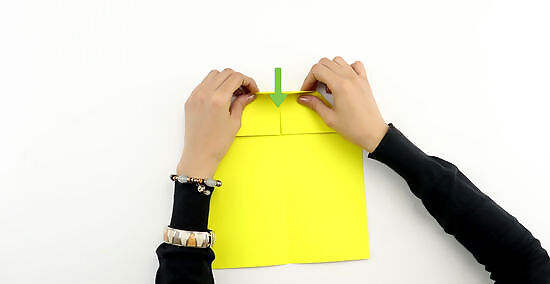
Fold the top peak down. Now take the tip of the triangle that has been created by your previous folds and fold it back down to the edge. You should now have a top layer of paper that resembles an equilateral triangle pointing down. This triangle is overlaid on top of two equilateral triangles on either side pointing up.
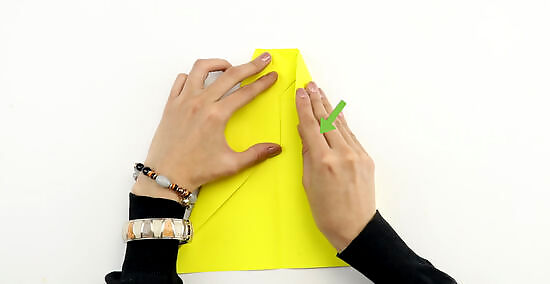
Fold the outer edges into the center line. Take the diagonal portions of your paper that form the outer sides of your two triangles and fold them in. Align the upper sides so that the diagonal edges are now vertical, meeting along the center. With these sides folded in, you should have a flat nose at the top of your paper that looks like a triangle pointing downward.
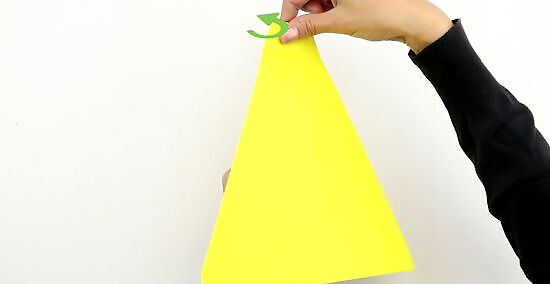
Flip your paper over. You should now have the flat side of your paper with no folds facing you. Take the top half inch of your paper and fold it backwards towards you. You should see a trapezoid shape with two triangles pointing at about a forty-five-degree angle outward on either side of it.
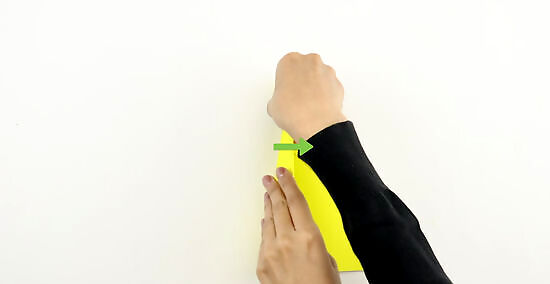
Flip your paper back over. Now fold the plane in half in a book fold. You should begin to see the final form of your jet plane. The part of the plane you just folded over should be showing at the nose of the plane, overlaid on top of your original crease.
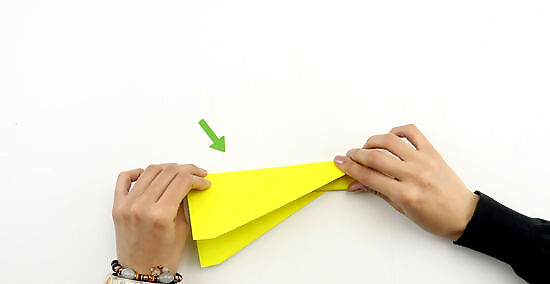
Fold the top flaps down to create the wings. The body of your paper jet plane should be about half an inch tall. The wings don’t have to be folded even with the base of the plane. They should go slightly past.
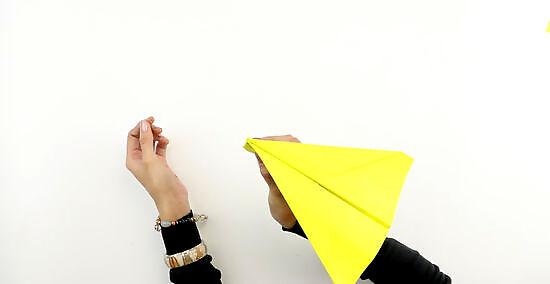
Prepare to fly your jet. Pinch the base of your jet and fan out the wings slightly so that the top of your plane is a flat surface. You can apply a small bit of tape to both the front and back of your plane to keep the wings closer together if you wish. Keep your plane level with the ground and flick your wrist to send it flying.












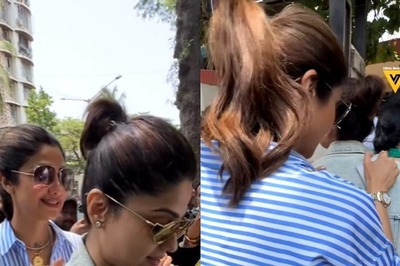
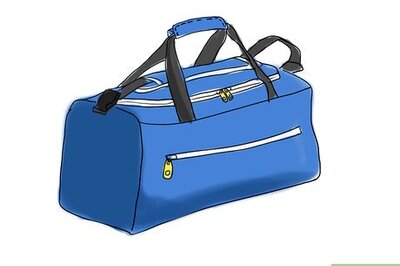
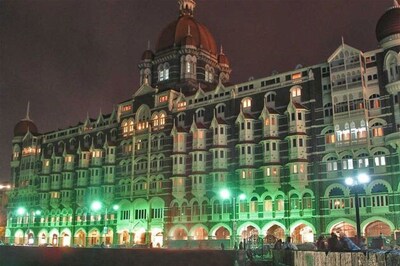

Comments
0 comment